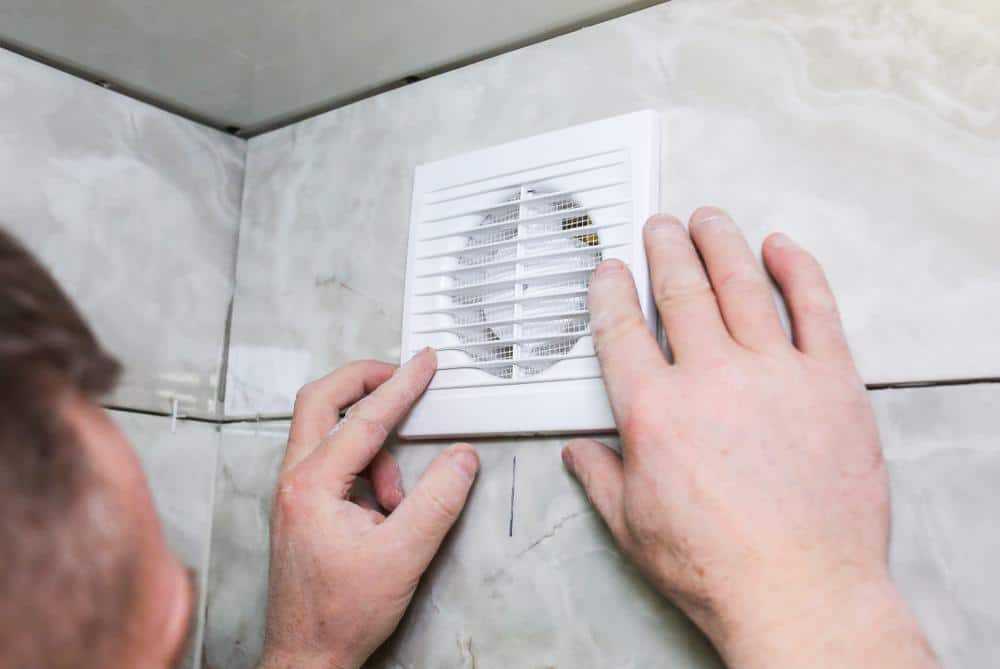
The bathroom exhaust fan plays a crucial role in maintaining the cleanliness and comfort of your bathroom. It helps in removing excess moisture, preventing the growth of mold, and eliminating odors. However, to ensure that your bathroom exhaust fan works efficiently, it’s important to choose the right pipe size. In this comprehensive guide, we’ll delve into the factors that determine the appropriate pipe size for a bathroom exhaust fan and why it’s crucial for optimal performance.
The size of the pipe for a bathroom exhaust fan largely depends on the fan’s capacity, measured in cubic feet per minute (CFM). Common duct sizes for bathroom fans are 4-inch, 5-inch, and 6-inch ducts. For example, an 80 CFM bathroom fan will require a 4-inch duct diameter, while a 110 CFM bathroom fan will require a 5-inch duct diameter. Always ensure to choose the appropriate duct size for efficient ventilation and to prevent the fan from overworking.
Importance of Correct Pipe Size
The size of the pipe for a bathroom exhaust fan is important for several reasons. First, it affects the fan’s ability to effectively remove moist air and odors from the bathroom. The pipe size determines the amount of air the fan can move, measured in cubic feet per minute (CFM). A properly sized pipe ensures that the fan can efficiently vent the air, preventing issues such as mold growth and unpleasant odors.
Second, using a pipe that is too small for the fan can cause the fan to work harder and provide insufficient venting. This can lead to reduced fan performance and a shorter lifespan for the fan. For example, using a 3-inch duct for a 4-inch, 100 CFM fan may negatively affect the fan’s performance and longevity.
Third, the duct size and length also impact the amount of air the duct can effectively carry. As you move to higher CFM fans, the duct size needs to be increased to a 5- or 6-inch round duct to accommodate the increased airflow. The length of the run, as well as the number of fittings and elbows, will also affect the duct’s capacity.
Standard Pipe Size for Bathroom Exhaust Fans
The standard size of a pipe for a bathroom exhaust fan depends on the fan’s capacity, measured in cubic feet per minute (CFM). There is no universal standard size, but common duct sizes for bathroom fans are 4-inch, 5-inch, and 6-inch ducts. The size of the bathroom exhaust fan duct depends on the CFM rating of the fan and the length of the duct. For example, an 80 CFM bathroom fan will require a 4-inch duct diameter, while a 110 CFM bathroom fan will require a 5-inch duct diameter. It is essential to choose the appropriate duct size to ensure proper ventilation and prevent the fan from working too hard.
Calculating the Required CFM and Pipe Size
To calculate the required CFM for your bathroom, you need to know the volume of your bathroom. You can calculate the volume by multiplying the length, width, and height of your bathroom. Once you have the volume, divide it by 7.5 to get the required CFM.
For instance, if your bathroom is 10 feet by 10 feet, and the ceiling height is 8 feet, the volume of your bathroom is 800 cubic feet (10 x 10 x 8). When you divide 800 by 7.5, you get 106.67. Thus, you need a fan with a CFM rating of approximately 107.
As for the pipe size, a 4-inch exhaust pipe is typically used for bathroom exhaust fans. However, for high-CFM fans, you may need a 6-inch diameter duct.
Potential Issues with Incorrect Pipe Size
Using the wrong size pipe for your bathroom exhaust fan can lead to several issues, including reduced airflow, increased noise, inefficient moisture removal, and energy inefficiency. For instance, using a 3-inch pipe for a 4-inch, 100 CFM fan can significantly reduce the fan’s effectiveness and may not provide sufficient ventilation for the bathroom.
Building Codes and Regulations
Building codes and regulations regarding pipe size for bathroom exhaust fans can vary depending on the local jurisdiction. However, the International Residential Code (IRC) provides some general guidelines for bathroom ventilation. According to the IRC, bathroom fans should have a mechanical exhaust capacity of 50 cubic feet per minute (CFM) for intermittent operation or ≥ 20 CFM of ventilation when operated continuously. The minimum exhaust fan duct size for a bathroom fan is a 3-inch diameter, but newer and more powerful bathroom fans may have 4-inch to 6-inch diameters.
In conclusion, choosing the right pipe size for your bathroom exhaust fan is crucial for its performance and efficiency. Always consider the fan’s CFM rating, the size of your bathroom, and the local building codes when selecting the appropriate pipe size.
Frequently Asked Questions
What does CFM stand for?
CFM stands for Cubic Feet per Minute. It is a unit of measurement used to determine the volume of air that a fan can move in one minute.
What happens if I use a larger pipe size than recommended for my bathroom exhaust fan?
Using a larger pipe size than necessary can lead to inefficient operation. The fan may not be able to create enough pressure to effectively move air through the larger duct, which could lead to poor ventilation and increased energy consumption.
How often should I clean the exhaust fan pipe?
The exhaust fan pipe should be cleaned at least once a year to ensure optimal performance. However, if you notice a decrease in the fan’s performance or an increase in noise, it might be time for a cleaning.
Can I install the exhaust fan pipe on my own?
Yes, you can install a bathroom exhaust fan pipe on your own, but it requires some DIY skills. However, for best results and to ensure safety, it is recommended to hire a professional, especially if you are not familiar with electrical work or local building codes.
How can I reduce the noise from my bathroom exhaust fan?
Noise from a bathroom exhaust fan can be due to several factors, including incorrect pipe size, dirty fan blades, or a malfunctioning motor. Ensuring the correct pipe size and regularly cleaning the fan can help reduce noise. If the noise persists, you may need to replace the fan or the motor.












